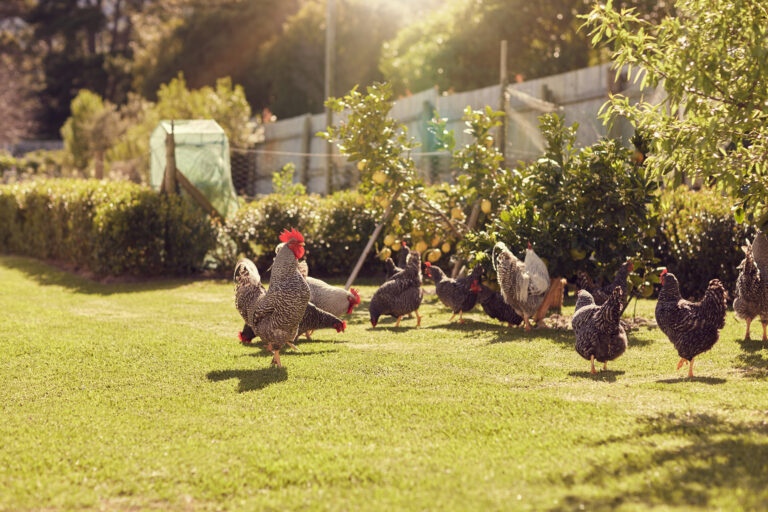Raising Chickens for Eggs | A Complete Guide To Raising Backyard Chickens
If you are wondering how to raise chickens for eggs, then look no further. I am covering all the details on raising chickens in your backyard for egg production.
If you want to raise a happy, healthy and productive flock of hens, then this guide is for you. I will cover basics regarding raising your birds from tiny chicks, moving them outdoors and keeping them safe from predators.
Additionally, we will talk about the best chicken breeds for beginning chicken keepers and how to keep your hens healthy all year long.
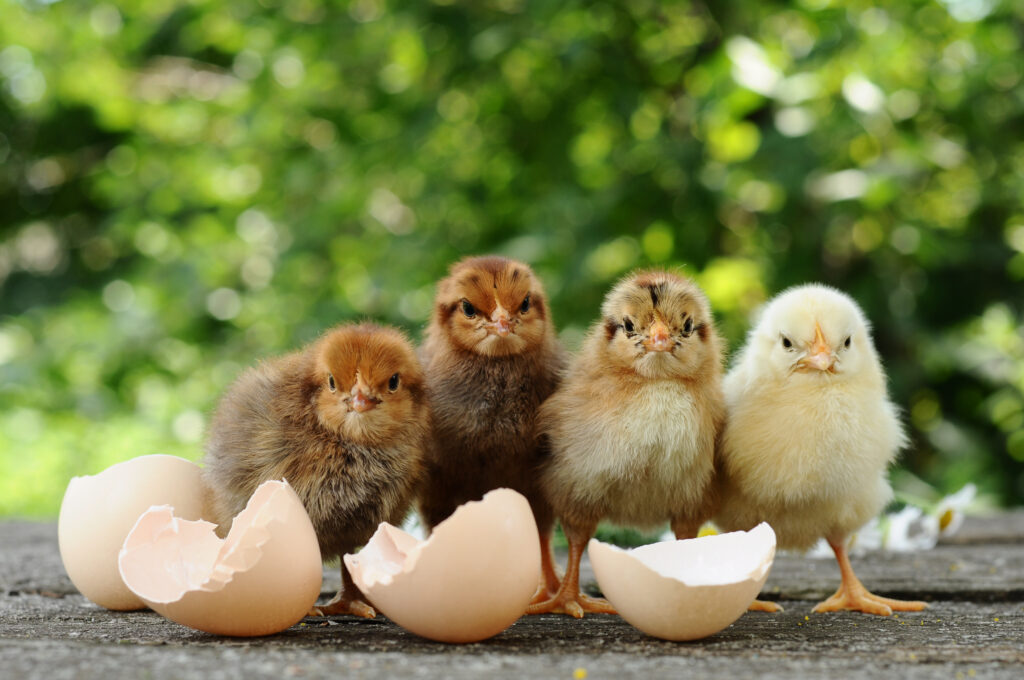
Preparing for Chickens
Before you grab those peeping, fluffy yellow chicks from the feed store, you will want to do some preparing at home.
Chicks need quite a lot of care when they first come home and you will want to be prepared to give them the best start possible.
Before you bring any chickens home, you will want to check with your local laws and make sure you are allowed to keep backyard chickens. You may be surprised how many towns across the U.S. don’t allow residents to keep chickens.
Some towns allow a certain amount of hens, but no roosters. And of course if you have an HOA, more than likely they won’t allow chickens at all.
But definitely don’t skip this part. You wouldn’t want to get everything set up, invest in a chicken coop and run, only to get a letter from the town telling you to get rid of your chickens.
This post may contain affiliate links, which means I make a small commission at no extra cost to you. As an Amazon Associate, I earn from qualifying purchases.
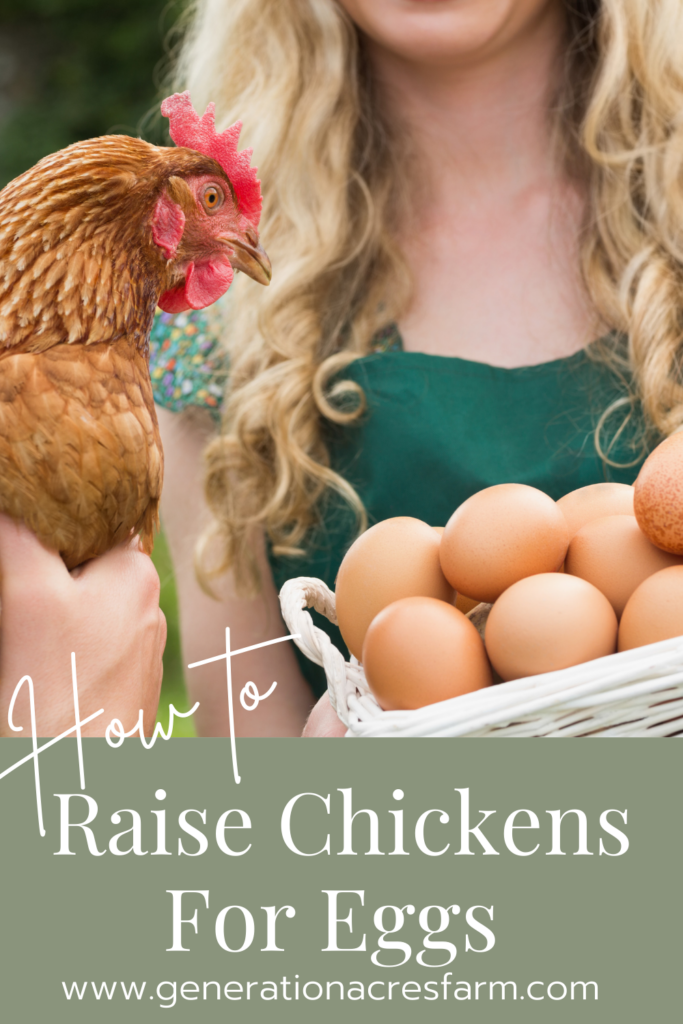
Raising Chickens – Chick Brooder
Before you bring home those chicks, you will need a chick brooder. A chick brooder can be made out of a lot of things(stock tank, DIY wooden box, kiddie pool w/wire lid), but my favorite is a large plastic Rubbermaid tote.
A brooder for raising chicks should have:
Bedding I like to use pine shavings because it helps with the smell and absorbs the moisture when the chicks spill their water.
Heat – this is the best heater for brooding chicks on the market. It’s pricier than a heat lamp, but those are extremely flammable and are too risky in my opinion.
Feed – chick starter
Water – preferably with some extra electrolytes and vitamins. I always keep this big pack of chicken vitamins and electrolytes on hand when we have new chicks, they have saved some chicks lives before!
We keep our chicks in the brooder from about 6-8 weeks. I like the chicks to have a decent amount of feathers, to help them regulate their body temperature. Basically when they start to look like feathered teenagers – that’s when they are ready to go outside.
After your chicks have grown out of the brooder, it’s time for them to move to a chicken coop outside. Here are a few tutorials on making chicken coops. Basically you need a place where the chickens can roost overnight, stay dry and warm, lay their eggs and keep safe from predators.

Tips for Building A Chicken Coop
Build the coop on raised legs. Chickens are prey animals and feel much safer when they are off the ground at night. Building a coop several feet off the ground is ideal.
Include nest boxes in your coop. Adding nest boxes to your coop is an easy way to make egg collection easier. A simple hinged lid that leads to the boxes is an easy addition.
Predator proof door. You will want a solid door with a lock on it. Raccoons have been known to unlatch doors, so make sure the lock can’t be opened by those little bandits.
Ventilation. Proper ventilation is crucial in a chicken coop. Chickens have sensitive respiratory systems, so fresh air is important. Provide windows covered in hardware cloth on two sides of the coop to allow a cross breeze. However, in the winter you will want to put boards over the windows to block the cold air.
A chicken friendly ramp. You will want a ramp for the chickens to walk up and down to access their coop throughout the day. A simple piece of plywood with cross pieces for stability works great.
You can buy coops from the feed stores, but I have found those to be made of cheap wood and I can’t imagine they would last too terribly long out in the elements. It’s probably better to have a coop built, or built it yourself.
A completely optional “luxury” is an automatic coop door. We invested in a pullet shut coop door a few years back. It basically keeps you from having to let the chickens into the run every morning and then lock them in the coop at night. Definitely not necessary, but we have found it to be quite nice, especially while on vacation.
To Free Range or Not To Free Range?
In addition to a safe coop for the chickens, you will need to choose whether you will keep your chickens in a run or allow them to free range.
Free ranging has a lot of benefits. Generally healthier chickens, a more varied diet for your chickens, lowers your feed cost because they are eating free bugs and worms and finally, the eggs they lay will be more nutritious.
However, the downside to free ranging is that the chickens will be more prone to predation and they will poop all over your yard. Constantly. Ha!
Another option is to build your coop with an attached “run”. A run is basically a fenced in area where the chickens can freely scratch, peck, eat and drink all day until they go back in their coop for roosting.
We like to do a mix of both. We have a run for the chickens, but I like to let them out into the yard a couple hours before sunset so they can get some bugs and extra nutrients, but don’t have all day to poop in our small backyard.
When we move to our 35 acres, I’m hoping to set up a pasture raised system with electric fencing where we can move the chickens every few days to new grass. But until then, our coop and run will suffice.
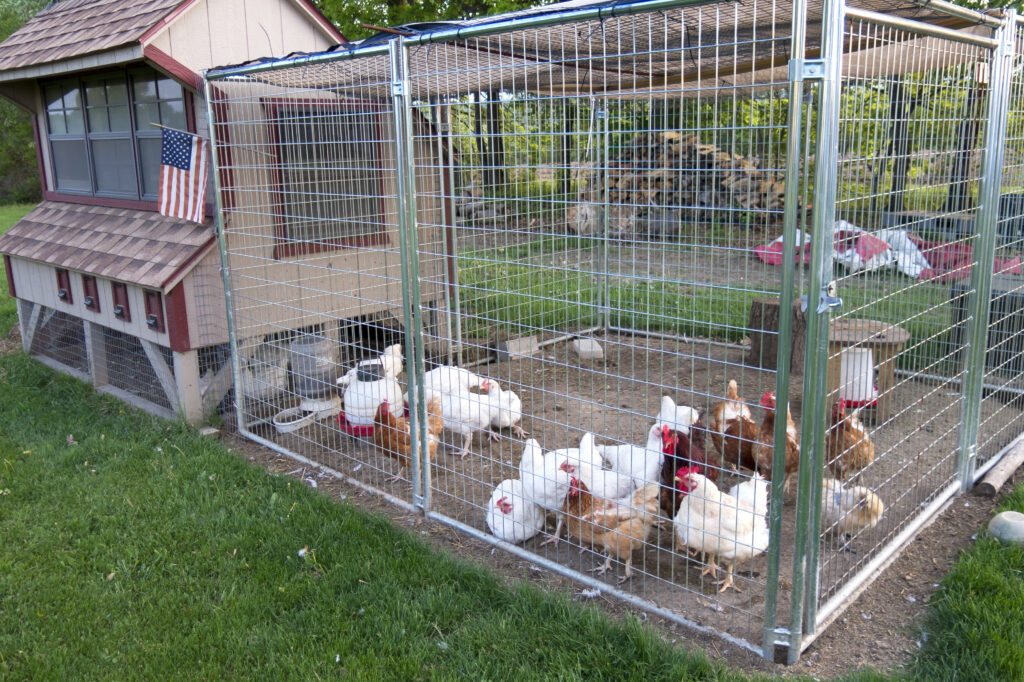
Tips for Building a Chicken Run
Predator Proofing. Make sure you use predator proof supplies to keep your birds safe. You will want to use hardware cloth instead of chicken wire, because predators can easily get through chicken wire.
Additionally, you will want to bury the hardware cloth underground a good 6”-8” to prevent foxes or dogs from digging under the run.
Adding a metal roof for shade and rain protection over half of the run is a good idea and bird netting to protect from aerial predators, over the other half.
How Many Chickens Should I Get?
Most people start out with six to eight chickens. Chickens do need to be with other chickens in order to be happy, so I would say no less than 4 is a good idea. In my state, it’s illegal to sell chickens in quantities less than 6, who knew?!
Another consideration is how many eggs you want per day. It’s important to choose laying hens that are bred for egg production. Most laying hens will give you 4-5 eggs per week during their peak years of production, which is usually between six months and two years old. After two years their egg production starts slowing down.
I like to add new chicks to our flock every spring so that by the time fall/winter hits, we have a fresh set of layers to keep our production up, while some of the older ladies begin to slowing down.
Next, let’s talk about the best chicken breeds for laying hens.
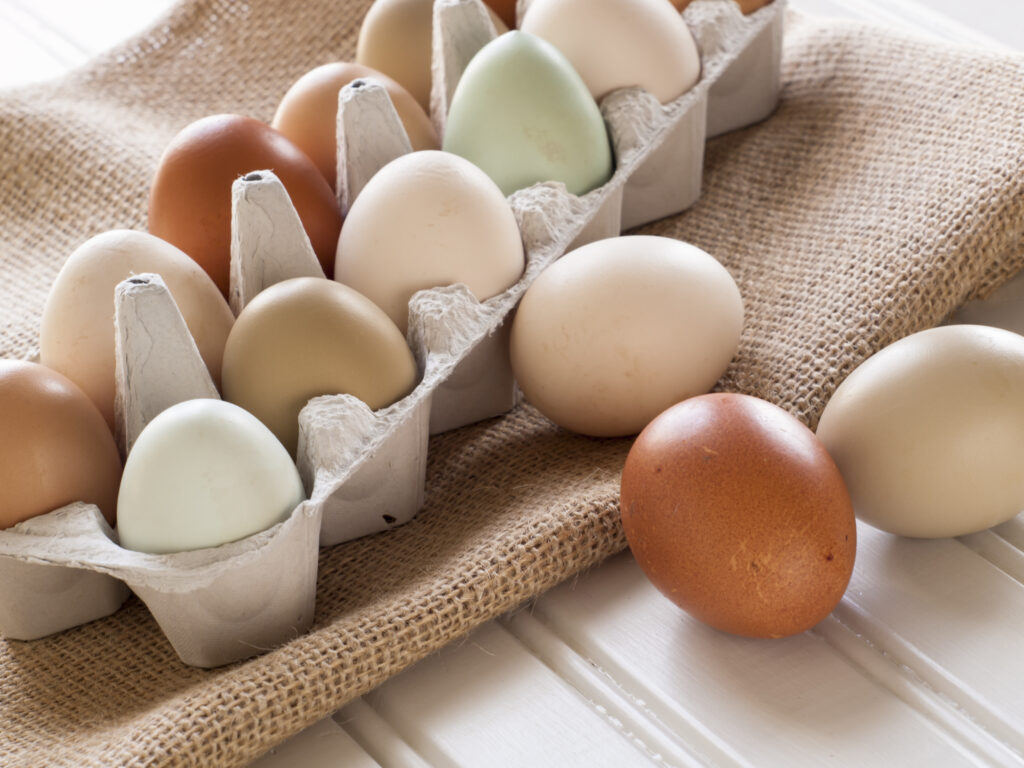
Best Chicken Breeds for Laying Hens
When I first got in to raising chickens, I had no idea that there were so many breeds! You can choose breeds for egg production, egg color, temperament, heat/cold tolerance and even just for beauty.
Since this post is mostly about raising hens for laying, I’ll focus on the best laying hens.
Rhode Island Red
I couldn’t write a post of raising chickens without including the quintessential laying hen, the Rhode island red. This beautiful breed is known for their red coloring and superb laying ability. An exceptionally sturdy bird and very easy going.
You wont regret adding RIRs to your flock. They are a delight.
Eggs: 300 eggs per year, RIRs are considered heavy egg layers and they produce a large brown egg.
Isa Brown
Second in line to the RIR, is the Isa Brown. Another heavy layer and easily adapts to almost any climate. Very laid back and friendly birds.
Eggs– Averages about 300 eggs per year and they produce a large brown egg.
Leghorn
The leghorn is another very popular breed, known for it’s white appearance and crisp white eggs. Leghorns are much more flighty and skittish than the previously mentioned breeds, they also are exceptional foragers, so you may be able to feed them less if you allow free ranging.
Eggs- Leghorns average between 280-300, medium-large white eggs per year.
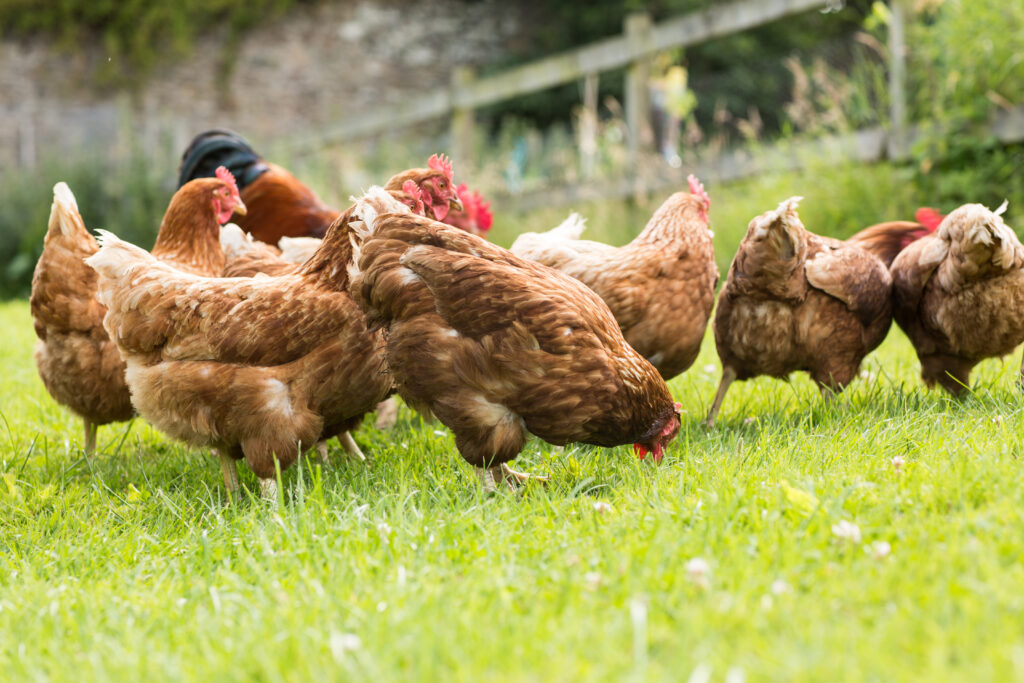
Nesting Boxes for Raising Chickens
Nesting boxes are something that must not be overlooked. Chickens will naturally look for a clean and private place to lay their eggs and unless you want to go hunting around your yard for them, you will want to provide nesting boxes for your hens.
Nesting boxes can be made from a variety of things, but most commonly they are built right into the chicken coop that they roost in at night.
Chickens can share nest boxes, not every hen needs their own. But it is best to keep the ratio around 1 nesting box per 3 laying hens, to make sure they don’t have to wait in line to lay their eggs. If they don’t have easy access to a nest box when it’s their “time”, this may encourage them to begin laying their eggs elsewhere – which is not a habit you want them to start.
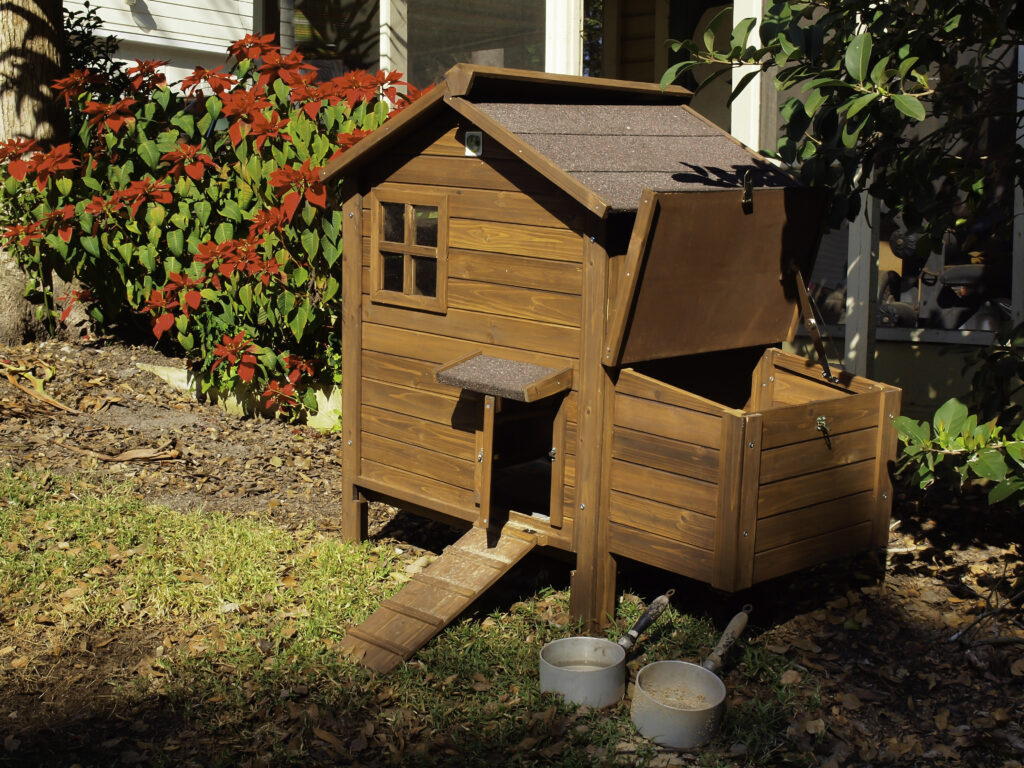
Essentials for Every Nest Box:
- Line the nest boxes with some sort of bedding. You can use hay, grass clippings, saw dust and my favorite is pine shavings.
- Keep the nest boxes clean. If you keep the boxes clean, you should have cleaner eggs and healthier, happier hens.
- Place the nesting boxes in a safe place, we want the hens to feel secure and safe while they lay their eggs.
- Consider adding food grade DE(diatomaceous earth)to the bottoms of your nest boxes whenever you clean them out. Do your own research on this, as it seems to be a controversial topic, but I have had great success with keeping lice and mites away(as in, we have NEVER had them), by sprinkling a tiny bit of white, food grade diatomaceous earth in the bottom of the nest boxes before lining them with pine shaving.
When Do Hens Start Laying Eggs?
This depends on the breed. But if you choose solid egg laying breeds, like Rhode Island reds, isa browns and leghorns, you should start getting eggs when they are between 16-20 weeks of age. The Isa Browns start laying as early as 16 weeks, which is a solid 2 months earlier than some other breeds.
How Long Do Laying Hens Give Eggs?
Great question! Most laying hens will lay fairly consistently for the first 2 years of their life, but after that, production begins to wane.
Additionally, most hens have a dip in egg production in the winter months when the days are shorter and it’s cold. Another reason why I like adding new chicks to the flock every spring, because my new layers will begin laying around the time my older girls take their winter break.
What Time of Day Do Chickens Lay Eggs?
Generally, most hens lay their eggs within 6 hours of the sun rising. But every flock and chicken is different. Once you get to know your chickens, you will be able to get a feel for when they lay their eggs.
What To Feed Your Chickens for the Tastiest Eggs
Protein. A nice, well rounded, organic chicken feed is a great base for your laying flock. You can be sure they will be getting plenty of protein by feeding them a layer feed from your local feed store.
Kitchen Scraps. besides the eggs and great entertainment, my next favorite thing about chickens is that they eat(and LOVE) our kitchen scraps. It feels so good to know that the apple cores, carrot skins and watermelon rinds won’t go to waste, but will be eaten by our beloved chickens and turned in delicious eggs and manure for our gardens.
I make this easier by keeping one of these compost bins next to our trash can. I have it hanging on a little hook and it’s easy for the kids and I to toss our scraps in the “chicken bucket” as my kids call it, instead of tossing them in the trash.
Garden Weeds. Chickens love tasty greens. We feed our chickens buckets full of garden weeds every year. Lettuce that has bolted and turned bitter? Toss it to the chickens. Cabbage that has been eaten up by worms? The chickens will devour it and love you even more if the worms are still on the cabbage! 😉
Eggshells. I toss the eggshells in our chicken bucket as well. The extra calcium is great for the hens. You can also supplement with oyster shells if your chickens need a calcium boost, but the eggshells are free, so we use that instead.
Mealworms. As a special treat, we keep these mealworms on hand. They are great for taming your chickens and teaching them to eat from your hand. My kids enjoy feeding them to the chickens by the handful.
Final Thoughts on Raising Chickens for Eggs
One of the “must haves” on our list for when we bought the house we currently live in, is that the town had to allow chickens. I wanted to raise chickens so badly that I refused to even look at homes that were in towns that didn’t allow chickens. When we lived in a neighborhood with an HOA and were looking for a new house, I bought an egg basket and kept it on my counter – empty – to remind me of the dream.
Seems kind of silly now, but keeping chickens has definitely been everything I thought it would be and more. I personally think that every home should have chickens in their yards. For eggs, for eating the food scraps, for providing rich compost and for fun.
Now go get your brooder set up and pick up those fluffy new family members…you won’t regret it!
I hope you learned a ton about raising chickens for eggs. There is nothing quite like having a flock of backyard chickens, I hope you will add them to your homestead soon!

